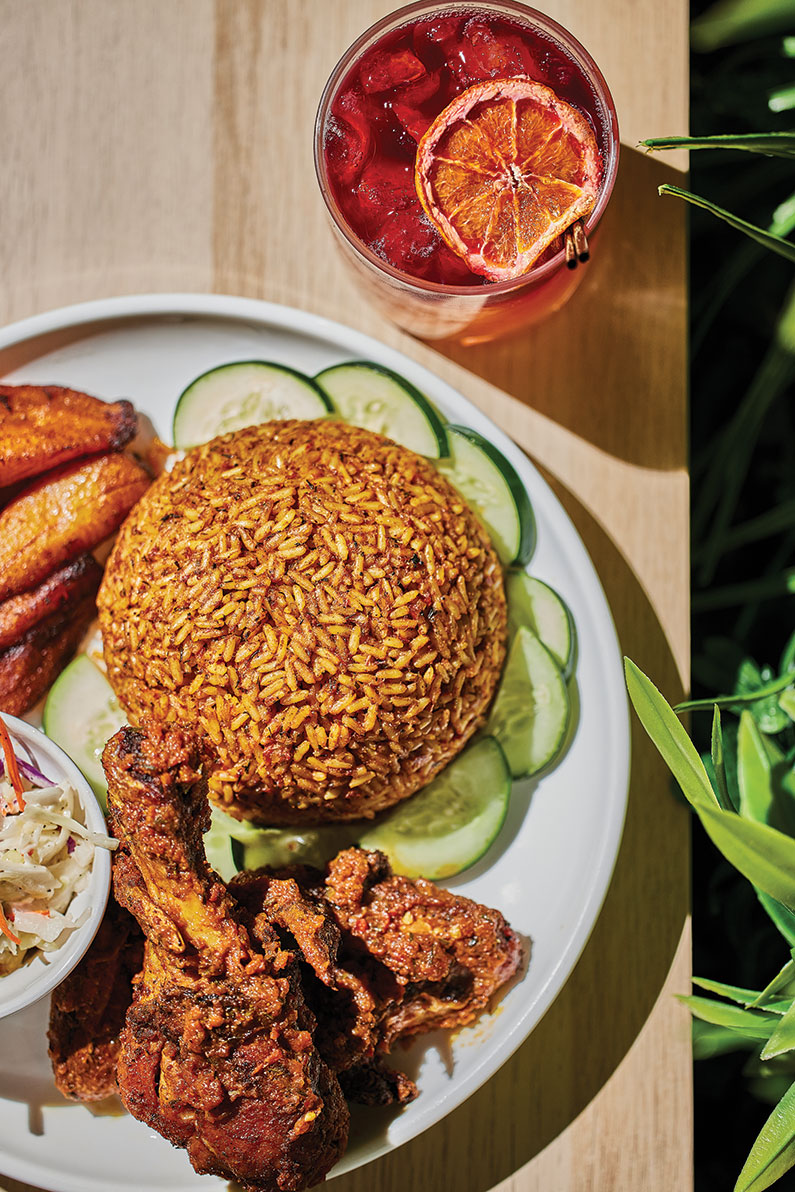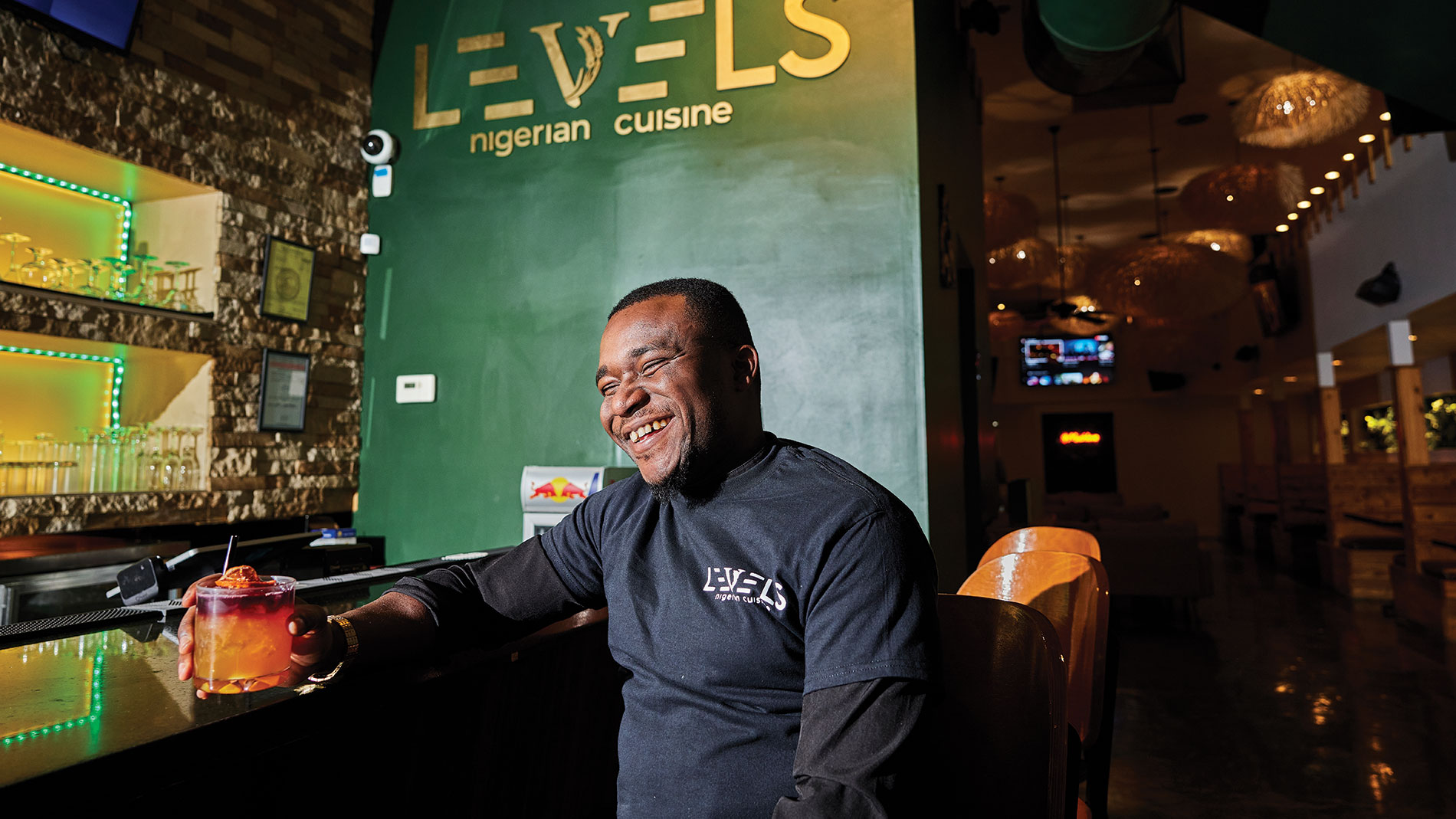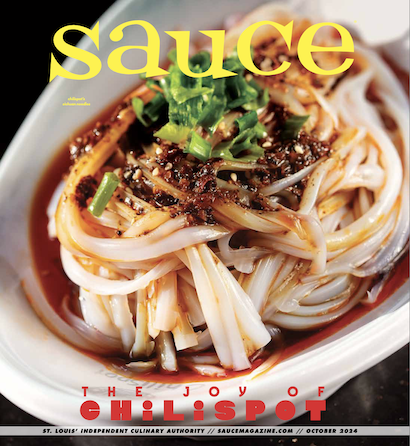2023 Best New Restaurants // No. 9 Levels Nigerian Cuisine
Take any representative regional dish, anywhere in the world, and you’ll find big opinions on whose style is best. In West Africa, jollof rice is often the subject of these familiar debates. Ono Ikanone, co-owner of Levels Nigerian Cuisine, knew jollof rice was not to be played with: The rice at his restaurant had to be on point.
According to Ikanone, jollof rice originated in the Senegambia region, a stretch of land between the Senegal River and the Gambia River. Its popularity spread throughout West Africa, where each area put their own spin on the dish. Ikanone built Levels’ version around the recipe for the smoky jollof he grew up with in Nigeria. “We just have tomato, bell pepper, habanero and onions – we blend that and that’s our base for the rice,” he said.

The Party Jollof at Levels comes with beef or tender chicken on the bone, as well as slightly sweet plantains. The signature smoky note traditionally came from cooking the rice over firewood for large events like weddings (hence the “Party” in the name). At Levels, the smokiness is derived from herbs like bay leaves and thyme, as well as the addition of wrapped charcoal placed directly in the pot. Each component complements the next, as the jollof’s layers of heat gradually come into focus.
Don’t miss the efo riro, a stew made with fresh spinach, bell peppers and a spice blend Ikanone buys from Nigeria. The vegetables shine, but the star is the pounded yam that can be served with it. Pounded yam, which is similar to fufu, is made from white yams and has a bouncy texture and neutral taste that is intended to complement the efo riro’s mélange of flavors. “The [pounded yam’s] texture is fluffy and light and soft enough to eat with your hand, but firm enough to use as a vessel for soup,” Ikanone said.

The pepper soup – salty, nutty with heat that has a slow build – is another standout. “It’s usually very spicy and in Nigeria you serve it at events, but it’s also a go-to when you are sick, to clear your sinuses,” Ikanone said. The soup is served with goat meat, cooked at length in a flavored broth, which completely tenderizes the meat as well as mellowing its flavor. Other dishes Ikanone likes recommending to guests include the egusi soup (made with melon seeds, palm oil, vegetables and tomato) or his own favorite, the marinated and grilled whole tilapia.
The response to the menu has been positive, even for the contentious jollof. “I have folks come in that have never had Nigerian food before, and I usually thank them for being adventurous. For Nigerians, they say, ‘I’ve missed this, I’ve been away from home and this reminds me of home,’” Ikanone said.
“It’s inspiring that we have people from all walks of life coming together to try our food. We say food brings us together, but we weren’t quite expecting this – and we’re thankful.”
Tags : Places, New Restaurants, Restaurants, Best New Restaurants






